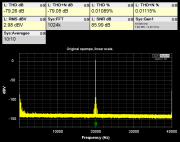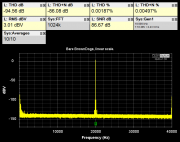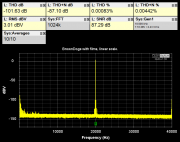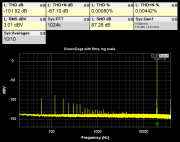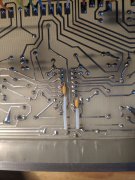The 700 Pro chassis didn't come with the switch or hole for it, was wired direct from the factory. Was the coupling switch meant to switch in DC blocking capacitors on the inputs? Are those caps now on the WOAD control board?
Sitting here working with the QA403 and PL2000S2.
Running freq sweeps out to 30 kHz at 6.02 dBv which I understand is 2 vrms output from the preamp.
I'm finally understand how the QA403 input attenuators work.
Working on understanding measuring distortion above 0 dBv.
Sitting here working with the QA403 and PL2000S2.
Running freq sweeps out to 30 kHz at 6.02 dBv which I understand is 2 vrms output from the preamp.
I'm finally understand how the QA403 input attenuators work.
Working on understanding measuring distortion above 0 dBv.

